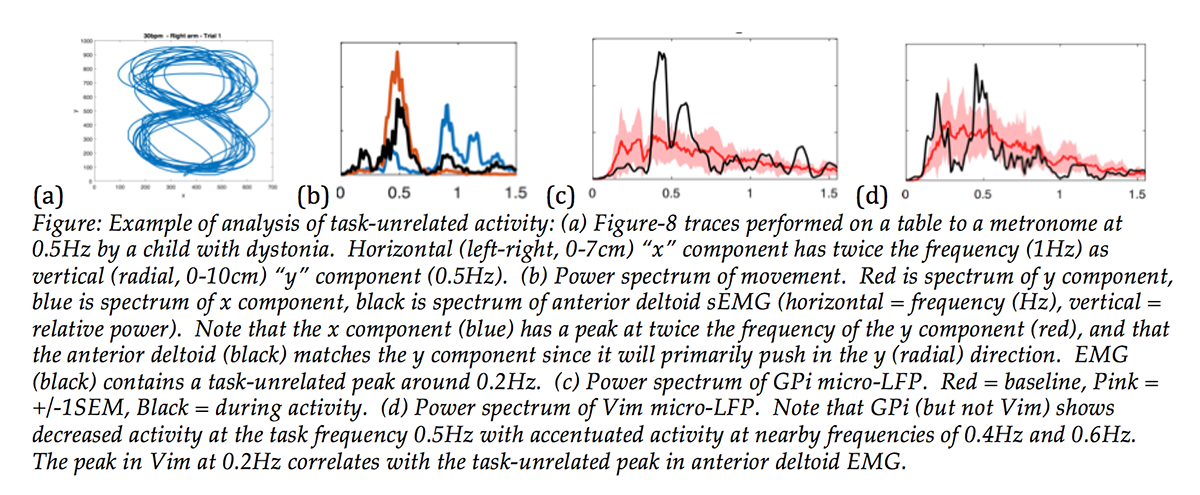Session Information
Date: Tuesday, September 24, 2019
Session Title: Dystonia
Session Time: 1:45pm-3:15pm
Location: Les Muses Terrace, Level 3
Objective: The relationship between injury to basal ganglia and the phenomenology of overflow and dyskinesia in childhood dystonia is not understood. We seek to test the hypothesis that a failure of local inhibition of motor features is responsible for overflow and excess muscle contractions in acquired childhood dystonia.
Background: Over the past 2 years we have developed and tested a new and unique clinical procedure for DBS in children with secondary dystonia. Targets are selected based on quantitative measurements that include test stimulation and electrophysiological recording 24 hours per day for 5 days from up to 160 contacts in pallidum and motor thalamus, along with surface electromyography (sEMG), EEG, motion kinematics, and video.
Method: We obtain data from simultaneous invasive recording of high-impedance local field potentials (micro-LFP) in GPi and Voa/Vop thalamus in children with secondary dystonia making rhythmic arm movements. The rhythmic movements are paced by a metronome, so that the desired task-relevant frequency is known. As a result, undesired task-irrelevant frequencies represent potential movements that must be suppressed in order to execute the task correctly. From the frequency spectrum, we can determine the presence of task-relevant and task-irrelevant components in each region of brain.
Results: We present results from children with asymmetric symptoms, showing the difference in pattern of GPi-thalamus interactions between the more and less affected hemispheres. The figure shows that in the relatively unaffected side of a child with hemidystonia, GPi has two peaks above and below the task frequency of 0.5Hz (c), thus inhibiting thalamus at task-irrelevant frequencies and focusing motor performance on task-relevant dynamics. Conversely, in the more affected side this sideband inhibition pattern is not seen, with nonspecific inhibition of thalamus that does not selectively focus the motor performance.
Conclusion: An important component of the failure of appropriate muscle and dynamics selection in dystonia may be due to inadequate sculpting of thalamic activity by nonspecific and insufficiently selective patterning within the basal ganglia output. These results provide the first evidence that inadequate focusing of desired motor components may contribute to poor muscle selectivity, overflow, and excessive muscle contraction.
To cite this abstract in AMA style:
T. Sanger, E. Arguelles, M. Liker. Selective Disinhibition of Thalamus by Globus Pallidus Internus: Failure of a Normal Control Mechanism in Childhood Dystonia [abstract]. Mov Disord. 2019; 34 (suppl 2). https://www.mdsabstracts.org/abstract/selective-disinhibition-of-thalamus-by-globus-pallidus-internus-failure-of-a-normal-control-mechanism-in-childhood-dystonia/. Accessed December 31, 2025.« Back to 2019 International Congress
MDS Abstracts - https://www.mdsabstracts.org/abstract/selective-disinhibition-of-thalamus-by-globus-pallidus-internus-failure-of-a-normal-control-mechanism-in-childhood-dystonia/

